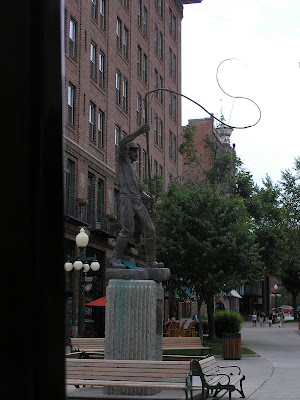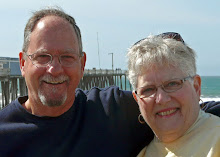We’ve spent the last several days in Dillon, MT. It is located in Montana's Gold West Country, and was an important shipping point from Utah to the gold fields of Montana. The rich agricultural valley was a welcome place for cattle and sheep ranching. The area was central to early Montana mining camps and settlements. Today, Dillon has a population of about 4,000 people. It is a pretty little town with a lot of the old buildings preserved.
The University of Montana Western campus which opened it’s doors in 1893 is here. They are completely redoing one of the main buildings that resembles a church. The University is the only public 4-year institution offering an innovative approach to learning, called Experience One. A student takes a single class at a time, three hours each day for three weeks, then moves on to the next class.


We visited Bannack, Montana's first territorial capital and now a well-preserved ghost town. It was a mining town and many of the old buildings are still standing, although in very poor condition. Some of the buildings we saw were the assay office, drug store, county court house, hotels, saloon, gallows, private homes, church, boarding house, cabins, store, jails, masonic lodge, school house, and the site of the first governor’s mansion. There were many artifacts on the grounds. Bannack’s very existence depended on the extraction of gold. In the winter of 1862-63, between 400-500 people lived in Bannack. Mining stopped during World War II and resumed after the war. Because of the low price of gold the population dwindled and people were forced to go elsewhere for jobs. In 1940 a group of concerned citizens organized to preserve the town site. On January 23, 1954, the property was donated to the state of Montana with one stipulation. Bannack was not to be made into a tourist town in competition with Virginia City. The ghost town atmosphere was to be preserved.






Thursday started with us seeing a herd of about 18 deer feasting in a hay field. We have never seen that many together before.
We drove the “Big Hole Scenic Loop” that passes through several small towns in the Big Hole Valley. A portion of our drive was the Pioneer Mountains Scenic Byway. It is backcountry driving that bisects the Pioneer Mountains. Granite peaks topping 10,000 feet in elevation are to the east, and gentler, forested terrain stretches out to the west. The road gently ascends a 7,800 foot divide between Wise River, flowing north, and Grasshopper Creek, flowing south.
Cattlemen have been here since 1874. Haystacks of over 20 tons of hay, standing 30 feet tall were produced using a device called a Beaverslide that was invented here in 1910. It has been mostly phased out with more modern equipment, although some are still in use. Due to the large amounts of hay needed to feed the cattle over the long winters this area earned its nickname “The Land of 10,000 Haystacks.”
We stopped at Crystal Park which is a unique recreation area at an elevation of 7,800 feet. This area is open to the public for digging for smoky, amethyst and clear quartz crystals. We were there for two hours, Mike digging and Judy watching. We brought home a few small crystals.

































































